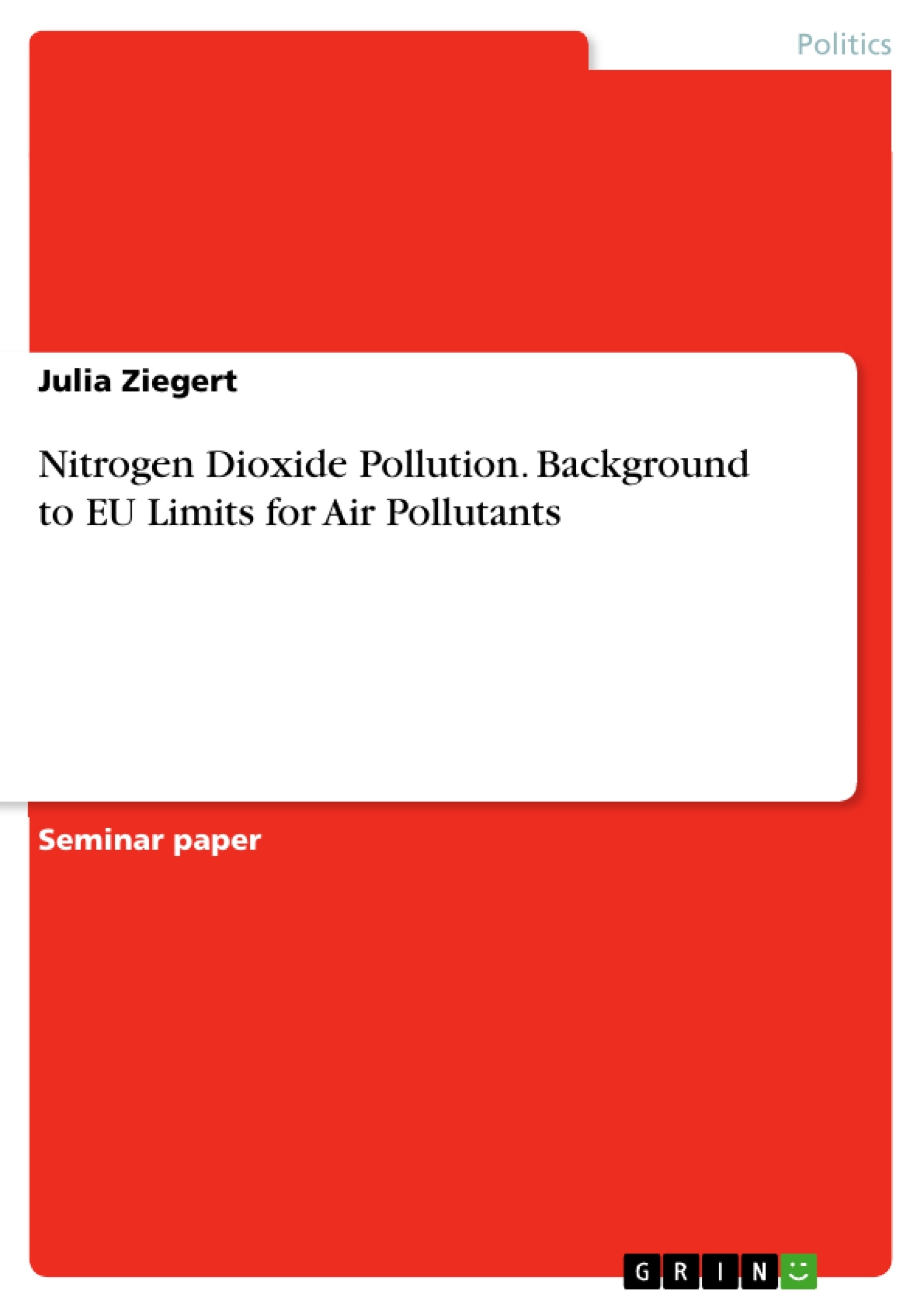This paper is an attempt to provide a comprehensive and systematic overview of European environmental policy, in particular the definition of the air pollutants' limit. The EU itself is not an isolated and closed legislative body, but a highly developed and vastly complex entity at supranational level. In doing so, the EU acts in an environment of international organisations and institutions on the one hand, and national influences on the other.
Moreover, the foundations of EU multi-level governance are based on a highly complex system of vertical and horizontal links. The topic of the environment requires horizontal integration. It should not be forgotten that the states of the EU are in a mutual dependence of the economic and environmental political paradigm. The establishment of the air pollutants' limits in recent months has repeatedly led to heated debates both at EU level and at national level.
The main sources of nitrogen oxides are internal combustion engines, especially diesel and combustion plants for coal, oil, gas, wood and waste. It is hardly surprising that, especially in agglomeration areas, high traffic volumes are a major cause for high air pollutants values. In addition, in 2015 the diesel scandal came to light. Large car companies used software that made it possible to simulate lower air pollutants emissions in certain test situations. This scandal is still not completely resolved.
As a consequence, due to the high air pollutants emissions, a diesel driving ban is being considered. Apart from the possible health effects that can be caused by the inhalation of fine dust, a diesel driving ban also affects a broad segment of the population. And while the need for a consistent environmental policy is undeniable, this paper seeks to address the question of how the EU set the limit.
In the first part of this thesis, I will discuss the process of Policy Making in the European Union by looking at the individual actors. It distinguishes between the horizontal and vertical levels of policy making. In the second part I take a closer look at the actors in the process of determining the air pollutants’ value. Here, I will bring their motivation and strategies into focus. The third part of this thesis examines the role of automotive companies in this process and their impact on it.
Inhaltsverzeichnis (Table of Contents)
- Introduction
- Policy Making in the European Union
- Legal Foundation of the European Union
- The European bodies: Interplay and Accessibility
- The Commission
- The Council of the European Union (COM)
- The European Parliament (EP)
- The European Court of Justice (ECJ)
- Non-governmental organisations (NGOs)
- Multi-Level Governance (MLG)
- Background to EU limits for air pollutants
- Initiation of Legislation on the EU limit values of air pollutants
- The Influence of the WHO on the EU limit values of air pollutants
- Financial interests
- The influence of the Automotive corporations
- Conclusion
Zielsetzung und Themenschwerpunkte (Objectives and Key Themes)
This paper aims to provide a detailed overview of European environmental policy, with a specific focus on the establishment of air pollutant limits. It examines the complex interplay of actors and influences within the EU's multi-level governance system, as well as the interplay between international organizations, national influences, and EU institutions.
- The process of policymaking in the European Union
- The role of various actors in setting air pollutant limits
- The influence of the World Health Organization (WHO) and automotive corporations on EU policies
- The legal foundation of the European Union and its impact on environmental policy
- The concept of multi-level governance in the context of European environmental policy
Zusammenfassung der Kapitel (Chapter Summaries)
The first chapter delves into the process of policymaking within the European Union, outlining the roles of key actors like the Commission, the Council of Ministers, and the European Parliament. It also addresses the legal foundation of the EU, tracing its development from the European Coal and Steel Community to the present day.
The second chapter focuses on the background of EU limits for air pollutants. It examines the initiation of legislation on these limits, exploring the influence of the WHO and financial interests. It also discusses the impact of automotive corporations on the process.
Schlüsselwörter (Keywords)
The paper centers on the key themes of European environmental policy, air pollution, EU limit values, multi-level governance, and the roles of various actors including the Commission, the Council, the Parliament, the European Court of Justice, and non-governmental organizations. It also examines the influence of international organizations like the WHO, and the impact of financial interests and automotive corporations on environmental policy decisions.
- Arbeit zitieren
- Julia Ziegert (Autor:in), 2019, Nitrogen Dioxide Pollution. Background to EU Limits for Air Pollutants, München, GRIN Verlag, https://www.grin.com/document/593599




